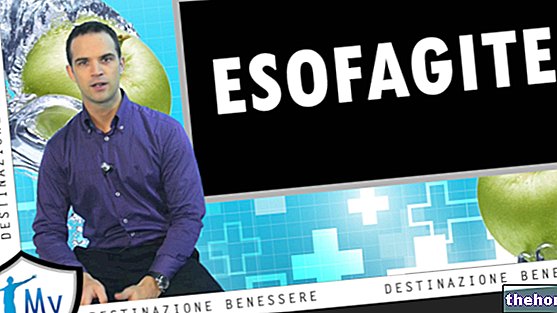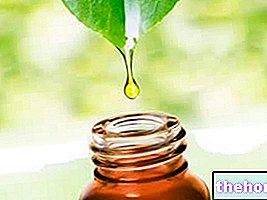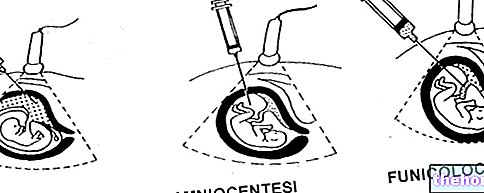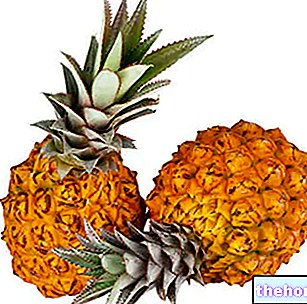Today we will talk generically about VITAMIN C; or WHAT IT IS, WHAT ARE ITS FUNCTIONS, WHERE IT IS, AND HOW MUCH DO YOU NEED TO TAKE IT to stay healthy. Let's start with a brief overview.
The "C", chemically defined L-ASCORBIC ACID, is a WATER-SOLUBLE VITAMIN ... that is a molecule that disperses uniformly in aqueous liquids. It is found mainly in foods of plant origin and can be defined as a rather "DELICATE" vitamin. Inside the body, it is absorbed in a fairly satisfactory manner in the stomach and intestines, and is then placed between the tissues and the blood; on the contrary, its elimination is represented by renal filtration and urinary excretion. This vitamin performs many IMPORTANT functions for the body BUT, to understand them, we need to go into more detail ...
The PECULIARITY of vitamin C consists in the ability to oxidize into DEHYDRO-ASCORBIC ACID in a REVERSIBLE manner.First of all, it represents a CO-ENZYMATIC factor that intervenes in many HYDROXYLATION reactions, that is chemical reactions designed to add a hydroxyl group (called OH) on molecules that do NOT contain it. These are rather complex mechanisms that will NOT be covered in this video and, therefore, WE WILL LIMIT ourselves to specifying that these REACTIONS involve: 1_ the conversion of the amino acid PROLINE into LYSINE, allowing the SYNTHESIS of COLLAGEN; 2_ the production of ADRENALINE starting from L-DOPA (ie an intermediate of DOPAMINE); 3_and some REACTIONS called “PHASE 1” in the METABOLIZATION of certain DRUGS in the liver (ie AROMATIC HYDROXYLATIONS). Furthermore, vitamin C participates in the CELL DEFENSE as a powerful ANTIOXIDANT. Its function is to eliminate oxygen free radicals BY GIVING an ELECTRON to a molecule called TOCOFEROL-RADICAL, or a derivative of VITAMIN E which, in this way, REGENERATES itself. Continuing, vitamin C facilitates the intestinal COLLECTION of FERRIC iron (the little BIO-AVAILABLE one mainly contained in vegetables), converting it (by REDUCTION) into FERROUS iron (instead easy to absorb). Finally, again by reduction, vitamin C is able to convert folic acid into its active CO-ENZYMATIC forms; in any case, for more information on folic acid metabolism, I suggest you consult the specially dedicated video.
As we have already anticipated, vitamin C is typical of foods of plant origin. Some products notoriously rich in ascorbic acid are: all citrus fruits (such as lemons and oranges), kiwis, peppers, chillies, parsley, tomatoes, apples and some green leafy vegetables. Among other things, perhaps many do NOT know that vitamin C, thanks to its antioxidant power, is widely used as a food additive known as E300. Its function, in addition to preventing the superficial browning of foods, is to avoid the conversion of NITRATES (ANTIMICROBIALS) into NITRITES (certain molecules that, in the stomach, tend to MUTURE into CARCINOGENIC NITROSAMINES). As if that were not enough, together with vit. And, some ESTERS of vitamin C (such as E304) facilitate the storage of fats, preventing them from becoming rancid and especially preserving the polyunsaturated ones (including the essential omega 3 and omega 6). The use of vitamin C as an additive, contrary to what one might think, is NOT an IMPROPER habit! This vitamin, being particularly subject to: OXIDATION, degradation in COOKING (as it is THERMOLABLE) and DISPERSION in water (as it is water-soluble), could be subject to NUTRITIONAL DEFICIENCY. This is attributable to two very specific reasons: 1_ first of all, fresh foods of vegetable origin (such as fruit and vegetables) tend to gradually lose their vitamin C content over time by oxidation; 2_ secondly, the same foods can LEAVE up to 75% of the initial ascorbic acid content, due to the PHYSICAL WASHING and COOKING processes! However, in a BALANCED diet rich in vegetables, with the precaution NOT to eat only cooked vegetables and preserved fruit, the risk of vitamin C DEFICIENCY is very limited. However, what might a lack or excess of L-ascorbic acid in the diet entail?
The SIGNIFICANT deficiency of vitamin C, as widely documented in the DIARIES OF MARINARESCHI up to the nineteenth century, causes a HYPOVITAMINOSIS called SCORBUTO. This disease manifests itself with capillary fragility and a tendency to blood haemorrhage due to a defect in the synthesis of COLLAGEN and other intra-cellular SUBSTANCES. Nowadays, scurvy is quite rare and the "SLICE" of the population that "could" be affected by a PARTIAL vitamin deficiency of ascorbic acid is that of the elderly. On the other hand, PHARMACOLOGICAL doses of vitamin C can induce both gastrointestinal disorders and an excess of the production of OXALATES with a tendency to the formation of kidney stones. Ultimately, HOW MUCH Vitamin C should we get in our diet?
The MINIMUM quantity of vitamin C to maintain the health of an adult, as a prevention of scurvy, is estimated at around 10mg per day; on the contrary, the MAXIMUM one is more than 1000 times higher (therefore over 10g per day) since, if not for the gastro-intestinal and renal consequences we talked about in the previous slide (probably attributable to acid pH), this last dose it does not appear to provide any kind of intoxication itself. In conclusion, the recommended dose of vitamin C (estimated on the body POOL, on the speed of excretion, on the absorption capacity, etc.) could correspond to 45mg per day; on the other hand, taking into account the losses with food processing, in line with what the American RDAs also cite, an intake of 60mg per day seems more suitable. Obviously, the need for ascorbic acid can increase more or less significantly on the basis of certain "particular" conditions; some of the most common are: absorption deficit, pregnancy (which requires a supplement of 10mg per day), breastfeeding (which requires an increase of 30mg) and smoking (which doubles the overall requirement). These needs are generally compensated by the diet (since, statistically, in Italy the intake of vitamin C fluctuates between 100 and 120mg per day); on the other hand, when the ability to eat properly is less for major reasons, it is also possible to use food supplements.




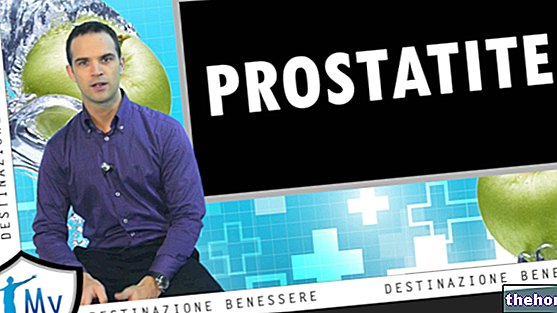
.jpg)
